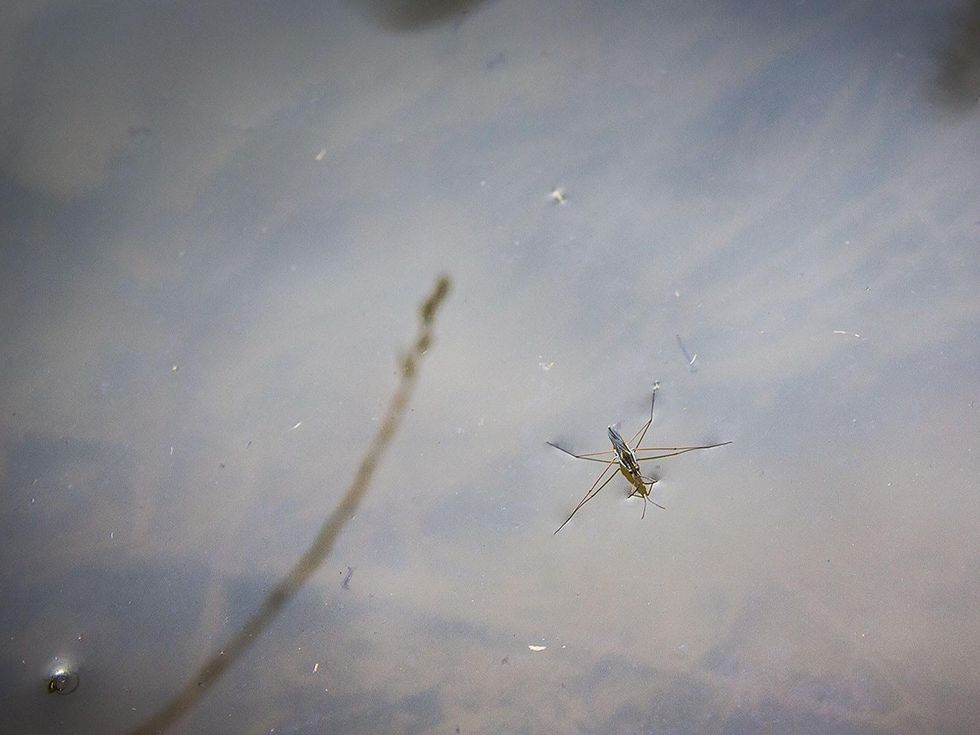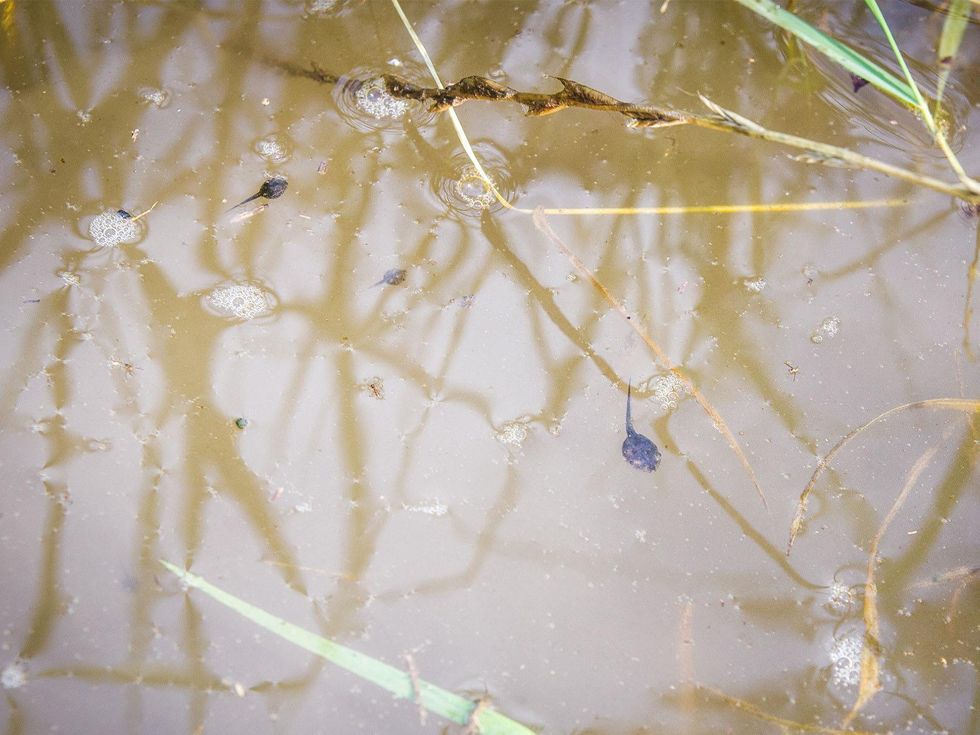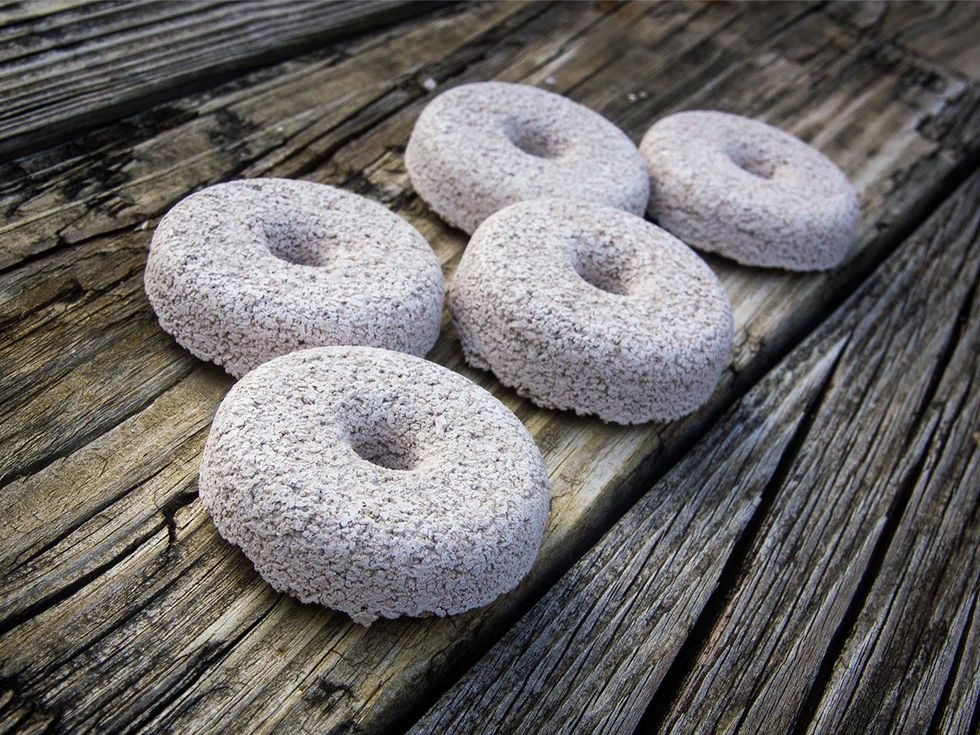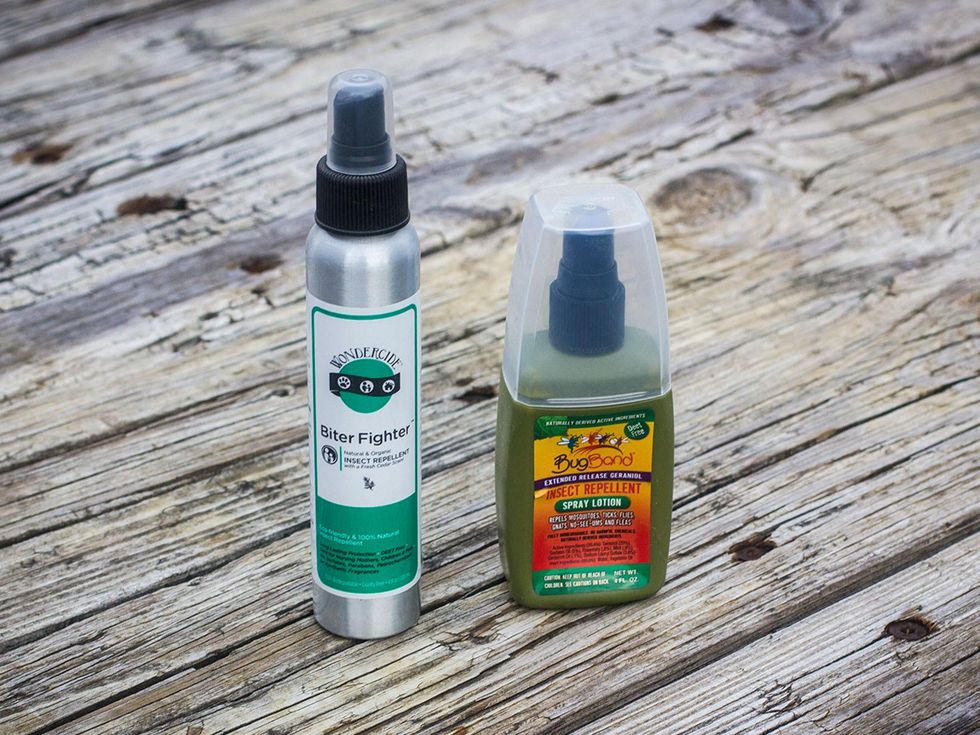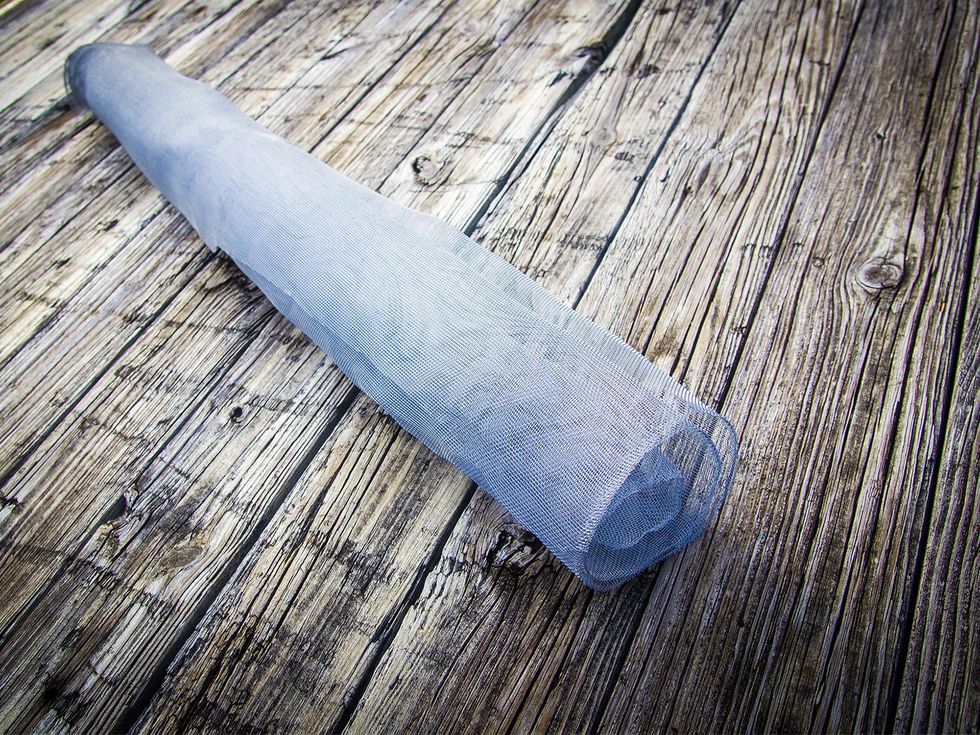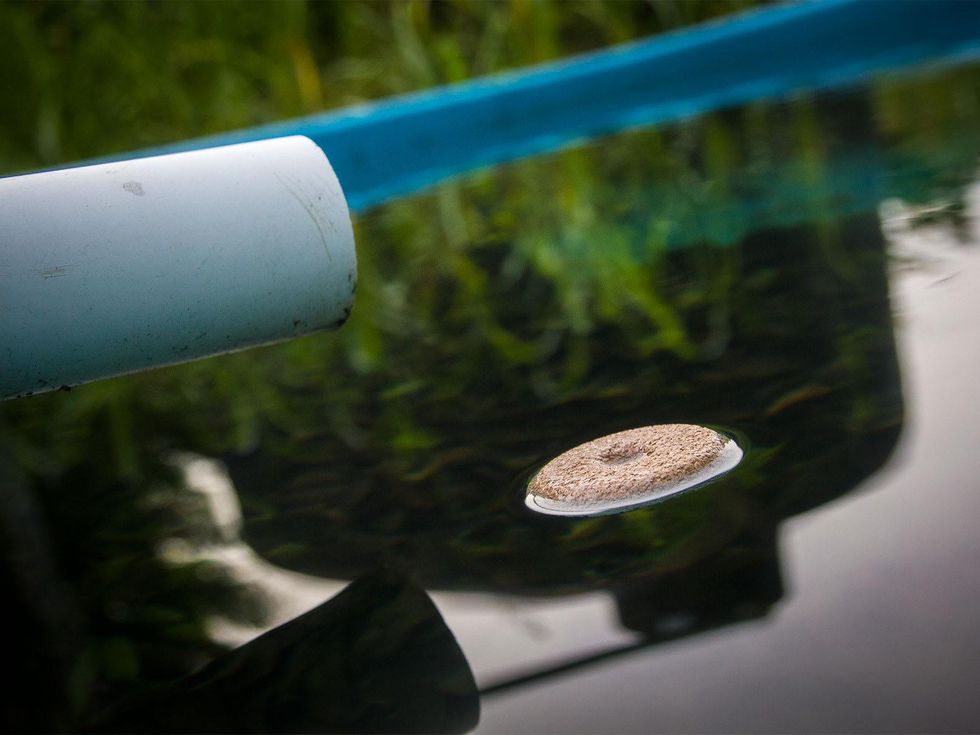The Farmer Diaries
Texas farmer deploys 5 strategies to control mosquitoes after heavy rains
The downpour of rain, almost daily for the last two months, has submerged much of the land I farm south of Dallas. Anywhere there's the slightest depression in the ground, water has pooled up and shows no signs of draining anytime soon.
In addition to countless small puddles, there's a long moat that runs along the north side of my house. In the middle of my yard is a mini pond, shaped like the swimming pool that was once there.
Almost overnight, these sudden shallow ponds have become wildlife habitat for hundreds of toads who sing all night and for mosquitoes — who make being outdoors in the evening intolerable.
Mitigating the annoyance of mosquitoes begins with understanding that there is nothing about them that calls for eradication.
My approach to mitigating the annoyance of mosquitoes begins with understanding that there is nothing about them that calls for eradication. In fact, they're a vital part of the ecosystem. They're food for a wide variety of creatures I enjoy living with, including toads and many species of birds, even hummingbirds.
Synthetic insecticides are useless and create more problems than the mosquitoes. Contrary to the sales pitches made by insecticide salesmen to city managers and health department directors, there's no way to control the mosquito population with routine sprayings, as many cities practice.
Mosquito larva live underwater in stagnant pools where they pupate and eventually emerge as adults. This emergence happens daily as each new brood reaches maturity; using a fine mist of pyrethroids here and there to kill off a small fraction of the adult females on a certain Wednesday night does nothing to control the ones that will emerge on Thursday afternoon.
Furthermore, for every adult mosquito killed by poison, it's estimated that 150 to 200 non-target insects are killed. These non-targets are harmless or even beneficial insects, such as ladybugs, lacewings, butterflies and bees. Caught in the crossfire are mosquito-eaters such as dragonflies, which are much more reliable agents of control than spotty sprayings.
My approach to mosquito abatement is to avoid disrupting the natural controls already in place and assist them where they can't be. In short, I try to understand what makes mosquitoes thrive or able to prey upon me, and then do the opposite.
Mosquito life cycle
All mosquitos begin as eggs, laid in water. They need calm water; almost any amount will do. A stagnant area of a creek, a 5-gallon bucket left out in the rain, even a saucer of excess water under a potted plant is enough.
Once they hatch, the larva swim in the water like little rice-sized hairy spines, wiggling their tails to move around as they feed on microorganisms and organic matter. They breathe by coming to the surface and taking a breath, just like a scuba diver.
After a few days, or a couple of weeks depending on the species and water temperature, the mosquito larva pupates. It then emerges from the water. As adults, mosquitoes drink nectar from flowers and are therefore pollinators. But females need blood to produce viable eggs, which is what makes them a bother to us.
Knowing that mosquitoes need water and a way to find us gives us all we need to know to put in place ways to enjoy the outdoors at night without becoming their prey.
Draining
The most effective way to keep mosquito numbers in check is to eliminate their nursery. After a rain, I pour out water from every place it has accumulated. Buckets, metal chairs, trash can lids, plant pots that have stopped up — no amount of water is too small. It should all be turned over and poured out.
This means of mosquito eradication is the most effective. If everyone in a city simply searched out and poured out every accumulation of rainwater after a shower, most of the mosquito problems would be solved.
To care for birds, I keep a bird bath and a small water feature full of water throughout the year. I change out the water in the bird bath about every two days and clean it with a wire brush monthly. This keeps mosquito larva out. As for the water feature, a small pond pump that circulates the water over an outcropping of rocks aerates the water, making it unsuitable for mosquito larva.
By eliminating as much of the mosquito breeding ground as I can find, I estimate that I reduce the mosquito population by about half.
Predators
There are plenty of flooded areas near my house, in my garden and in the field that I simply can't drain. Earlier this year, I spotted mosquito larva in all of them. Being anywhere close to the pools was to become covered in mosquitoes, so I plotted my course of action.
I imagined pouring orange oil into the water so that it would float to the top, create a barrier for oxygen and suffocate the baby mosquitoes. I thought of tossing mosquito "dunks" in the water.
But frequent storms prevented me from doing that. When I scouted out the floodwaters in late May to assess my mosquito plague, I found no larva, not a single wiggler. What I did find were tadpoles, water striders, dragonflies and adult toads everywhere.
In these more natural bodies of water, as stagnant and suitable for mosquitoes as they were, doing nothing was just as effective. Doing nothing allowed the mosquito predators to come in, breed, eat and decimate the larva.
This makes me think that the mosquito numbers I saw a month ago were not so much an outbreak as they were a sort of setting of the table for the dinner guests who were on their way. This also makes me wonder how much of a city's mosquito problem comes from killing off the frogs, toads and mosquito-eating insects through aerial sprayings of insecticides.
Screens
The 17,000-gallon water storage tanks my father installed to collect rainwater are open to the air at all times. The tubing that pipes water from a farm building's gutters to the top of the tanks prevent the lids from fitting.
These tanks would be outright mosquito incubators if not for the aluminum window screen he fashioned to fit over the opening to each tank. The fine, flexible mesh fits under the pipes but covers the openings of the tanks, keeping mosquitoes from getting in or out.
Fiberglass window screen also works. It's easy to cut and shape around the top of a rain barrel. I've also used it to seal off a greenhouse and a shed that's home for my cats. Excluding mosquitoes from their desired habitat, and from having access to us and our cats as their host, works better than treatments of any kind.
Dunks
Even with standing water overturned, predators engaged and rain barrels screened, there are areas of water that can be reached by mosquitoes but not toads and tadpoles.
One such place is the stock tank that catches the overflow of our rainwater storage tanks. It's a large, 1,500-gallon plastic container that looks like an above-ground swimming pool. It's open to the air and too large to screen in. It's full of leaves and perfect for mosquito larva.
I keep this tank stocked with a biological control known as mosquito dunks. Resembling gray mini bagels, dunks are made of organic matter and infused with spores of bacillus thuringiensis, or Bt for short.
Bt is a bacteria that exists everywhere on the planet and produces proteins that are toxic to certain insects. Bt comes in many sub species, such as Bt Israelenses, which is toxic almost specifically to mosquitoes. The larva feed on the dunks, and, days later, they die.
Dragonflies and other non-target insects seem immune. And Bt is nontoxic to frogs, birds and humans. It's in our gut right now as it lives abundantly on the underneath side of plant leaves.
For abating mosquito numbers where nature can't reach, or even in stagnant areas of creeks, Bt is an eco-friendly mosquito killer that won't disrupt populations of mosquito predators. Dunks are available at gardening stores, and some cities give them away to residents.
Because a handful of studies have found that Bt hurts some beneficial non-target insects, I use it sparingly, only where natural predators or screening won't work out.
Repellents
Even after draining standing water, letting toads have their lunch, screening in tanks and throwing Bt into hard-to-reach water, there are mosquitoes that survive. Just a half dozen can make working or enjoying leisure time outdoors impossible in the evenings. For these persistent pests, I use organic insect repellents.
Sprays with the botanical extracts geraniol or cedar oil seem to do the trick, though I'd not oppose ones with DEET if I needed them. Sprayed into skin and clothing, and touched up every hour or so afterward, products containing these extracts are effective in keeping mosquitoes away.
Used in diffusers, geraniol has proved to be the most effective of all the botanical repellents, with one study finding a 75 percent reduction in adult females in treated areas outdoors, and a 97 percent reduction indoors.


